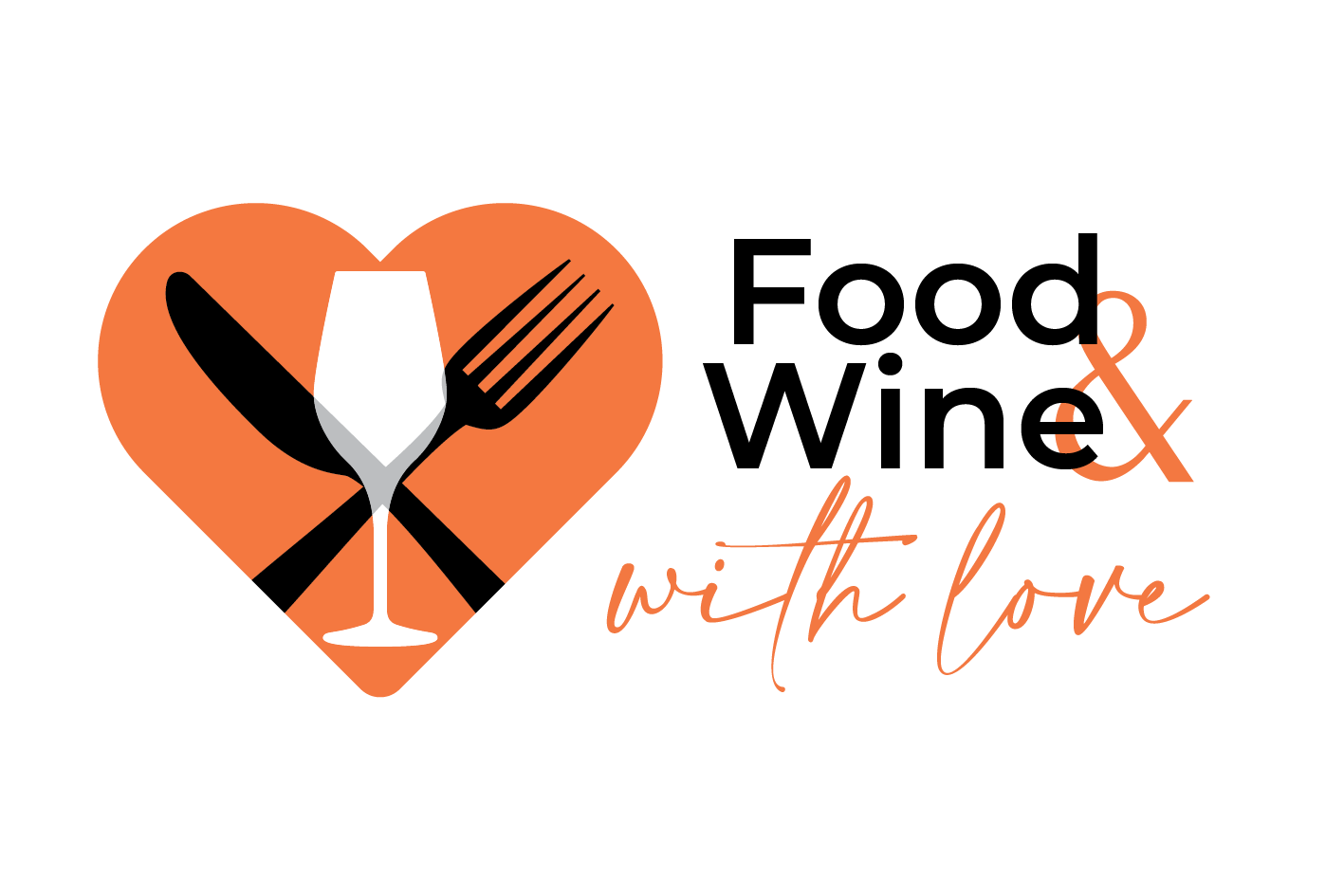The delightful world of German cuisine has made a notable impact on Australia’s vibrant food scene.
From hearty sausages and tangy sauerkraut to delicate pastries, German foods offers a unique culinary experience that has been embraced by Australians with enthusiasm. This cross-cultural exchange reflects more than just a taste for new flavours; it represents a deeper connection between the two nations through their shared appreciation for rich, comforting dishes.
As German culinary traditions weave into the fabric of Australian dining, they highlight a fascinating blend of cultural influences and local adaptations. The fusion of German recipes with Australian ingredients has given rise to a new appreciation for these traditional dishes, creating a culinary dialogue that celebrates both heritage and innovation. Whether through festive Oktoberfest celebrations or the growing popularity of German-style eateries, this relationship between German and Australian food underscores a shared love for diverse and delicious cuisine.
Top 10 German Foods You Must Try
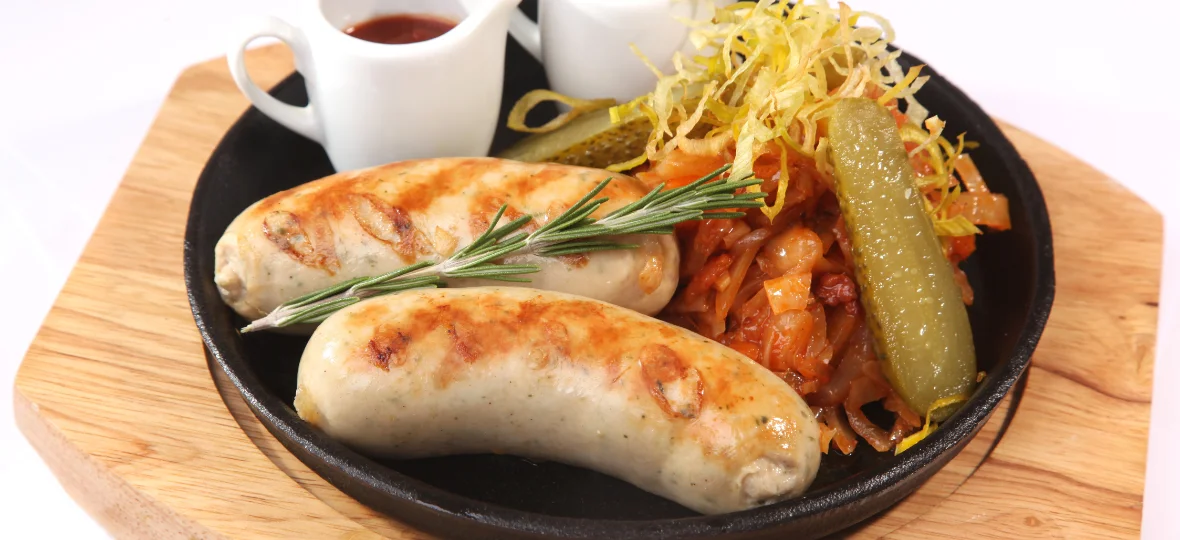
1. Wurst (Sausages)
Wurst is a quintessential part of German cuisine and comes in many varieties. The most famous types include Bratwurst, Weisswurst, and Currywurst. Bratwurst, made from pork, beef, or veal, is typically grilled and enjoyed with mustard or sauerkraut. Weisswurst, traditionally made with minced veal and pork back bacon, is a milder sausage that pairs well with sweet mustard. Currywurst, a Berlin specialty, is a bratwurst served with a spicy ketchup sauce seasoned with curry powder.
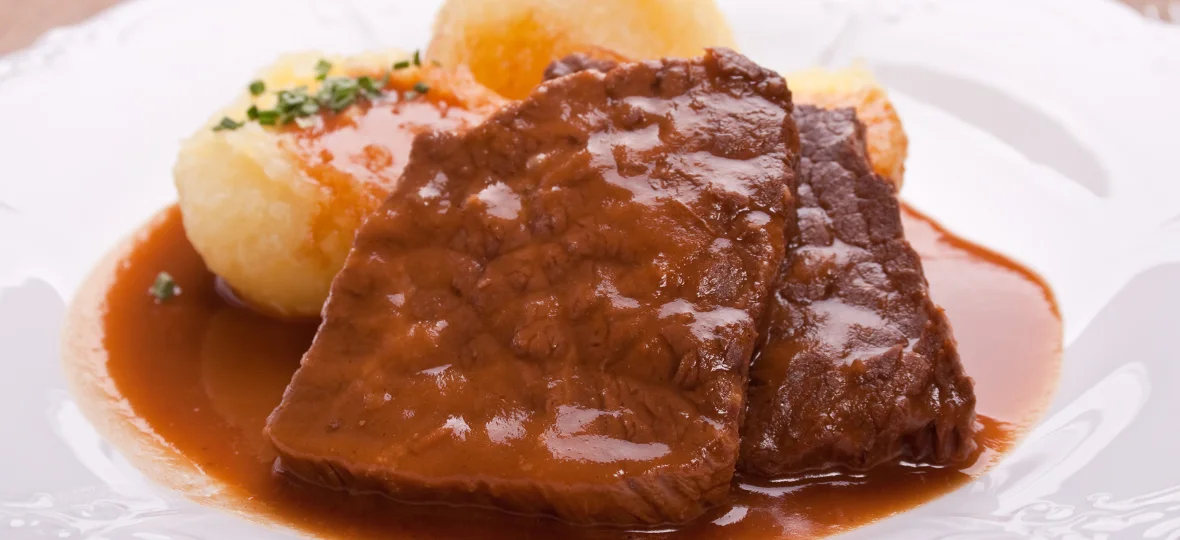
2. Sauerbraten (Pot Roast)
Sauerbraten is often one of Germany’s national dishes. This pot roast is marinated for several days in a mixture of vinegar, water, and spices before being slow-cooked. The result is a tender, flavorful roast with a tangy and savoury taste. Typically served with red cabbage, potato dumplings, or gravy, Sauerbraten reflects the German love for hearty, comforting meals.
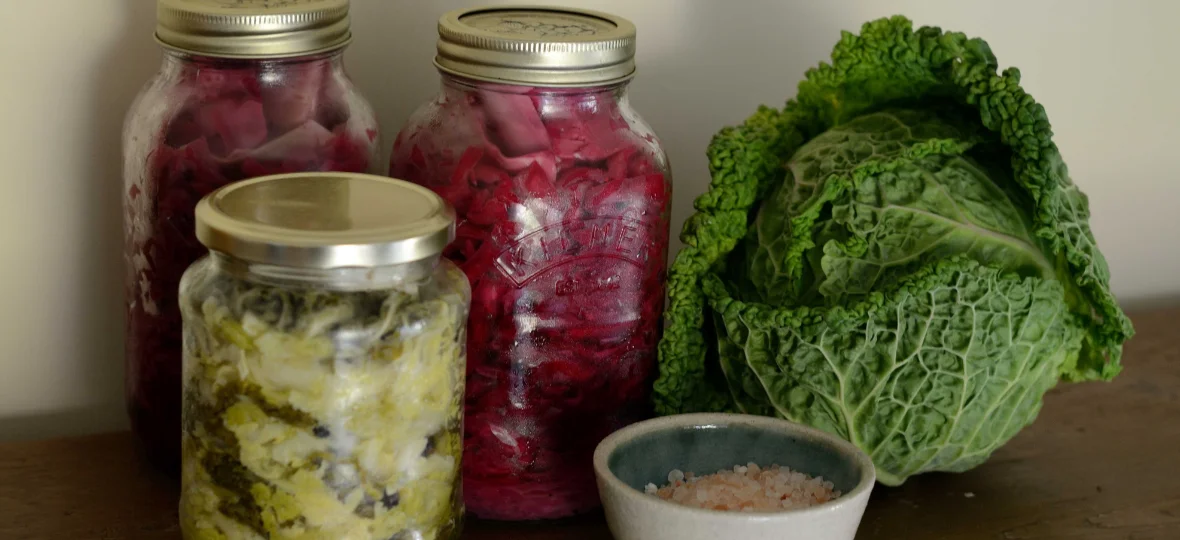
3. Sauerkraut (Fermented Cabbage)
Sauerkraut is a staple side dish in Germany. Made from finely shredded cabbage fermented by various lactic acid bacteria, it has a distinctive tangy flavour. Sauerkraut is often served alongside sausages, pork, or as a topping for sandwiches. Its fermentation process not only imparts a unique taste but also makes it a probiotic-rich food beneficial for digestion.
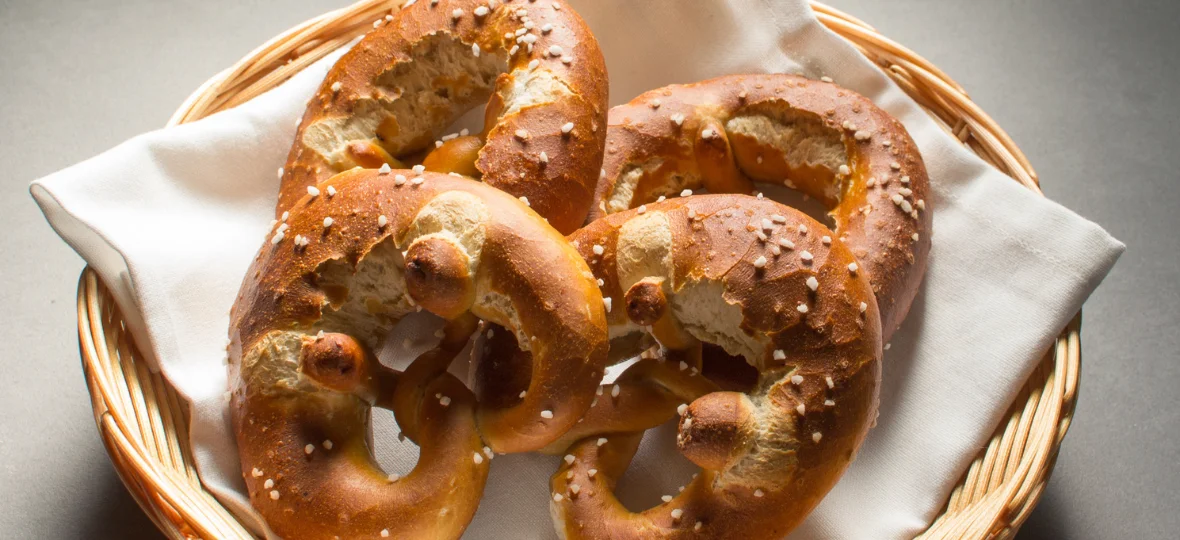
4. Pretzels (Brezn)
German pretzels, or Brezn, are iconic baked goods known for their distinct knot shape and crisp, golden-brown crust. These soft pretzels are typically sprinkled with coarse salt and enjoyed with mustard or cheese, making them a favourite among German breakfast food items. Originating from Southern Germany, pretzels have become popular worldwide, with their savoury, slightly nutty flavour capturing the essence of German baking. Whether you’re in Germany or enjoying a taste of German breakfast food items abroad, pretzels are a must-try for an authentic experience.

5. Schnitzel
Schnitzel is a breaded and fried cutlet of meat, usually veal or pork. The dish has become a beloved part of German cuisine, especially in the form of Wiener Schnitzel, which is a traditional Austrian variant. The schnitzel is often served with lemon wedges, potatoes, or a fresh salad. The crispy exterior and tender interior make it a crowd-pleaser in both casual and formal settings.
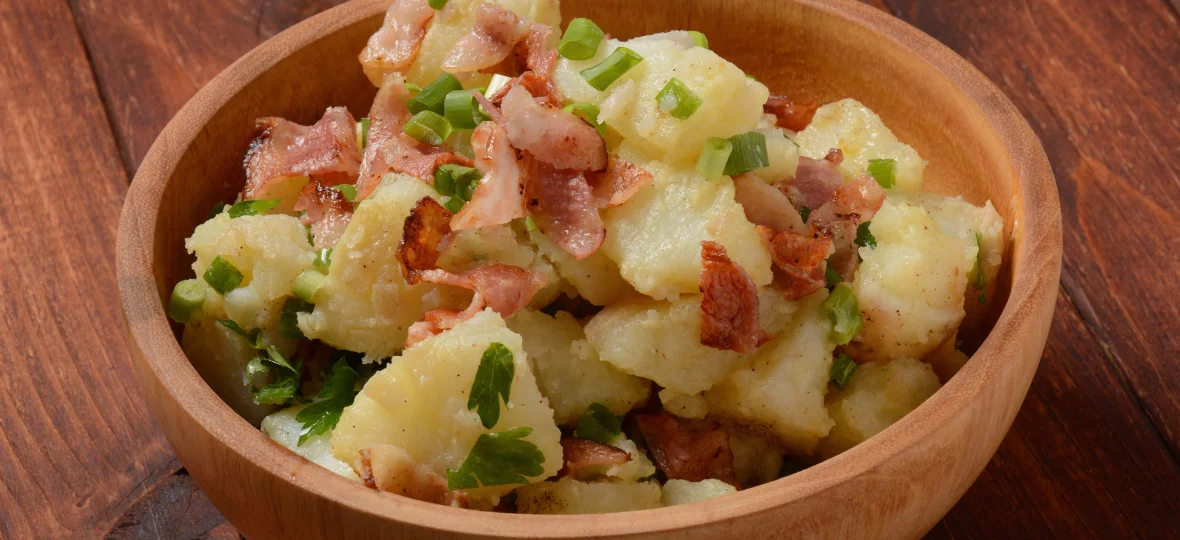
6. Kartoffelsalat (Potato Salad)
German potato salad varies from region to region. The Southern German version typically features a warm, vinegar-based dressing, while the Northern German variety is made with a creamy mayonnaise dressing. Kartoffelsalat is a versatile side dish that complements a range of main courses, from sausages to grilled meats, reflecting Germany’s regional diversity in food preparation.
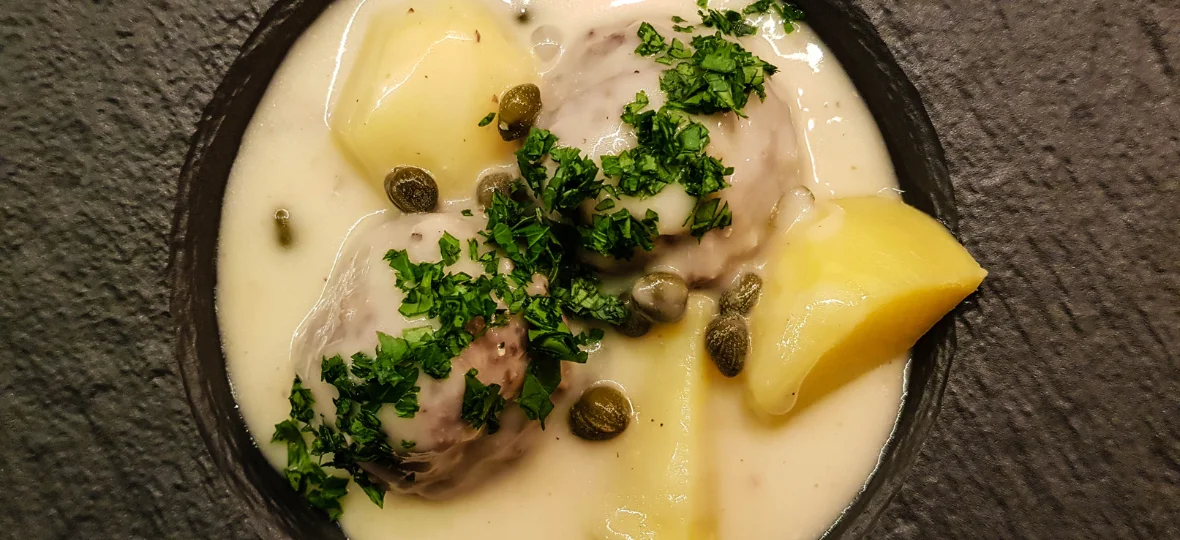
7. Königsberger Klopse (Meatballs in White Sauce)
Königsberger Klopse are classic German foods, made from a mixture of ground veal and spices, shaped into tender meatballs and served in a creamy, tangy white sauce infused with capers. Originating from Königsberg (now Kaliningrad), this dish showcases the rich, regional flavours that define German foods. The combination of delicate meatballs and a savoury, caper-studded sauce creates a unique taste experience that truly reflects the diverse culinary heritage of Germany.

8. Apfelstrudel (Apple Strudel)
Apfelstrudel is a classic German pastry made from thin layers of dough wrapped around a spiced apple filling. This dessert is often served warm with a dusting of powdered sugar and a side of vanilla sauce or whipped cream. The flaky, buttery pastry and sweet, tart apple filling make Apfelstrudel a comforting and popular choice, especially during the colder months.
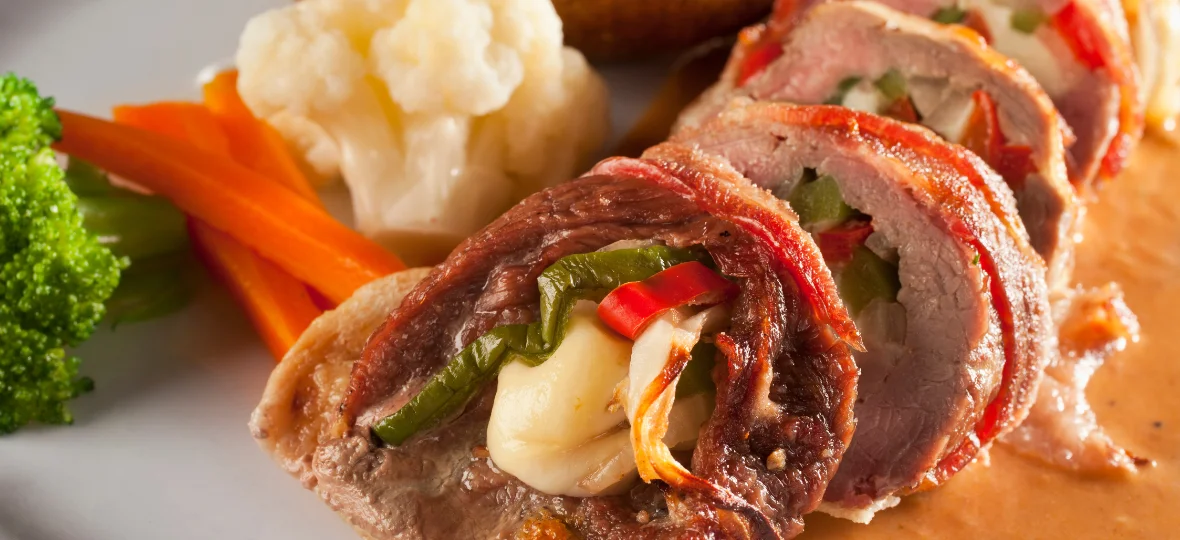
9. Rinderroulade (Beef Roll)
Rinderroulade consists of thin slices of beef rolled around a filling of bacon, onions, pickles, and mustard, then braised until tender. This dish is typically served with gravy and accompanied by traditional sides like red cabbage and dumplings. Rinderroulade is a testament to German culinary tradition, reflecting the country’s love for hearty, satisfying meals.

10. Käsekuchen (German Cheesecake)
German cheesecake, or Käsekuchen, is distinct from its American counterpart due to its use of quark cheese instead of cream cheese. The result is a lighter, fluffier texture with a delicate flavour. Käsekuchen is often enjoyed plain or with fruit toppings and offers a refined take on a classic dessert. Its simplicity and elegance make it a beloved treat across Germany.
Let’s Cook German Food
Bratwurst Recipe
Ingredients:
500g pork shoulder (or a mix of pork and veal)
250g pork fat (for juiciness)
1 small onion, finely chopped
2 cloves garlic, minced
1 tablespoon salt
1 teaspoon black pepper
1 teaspoon paprika
1/2 teaspoon caraway seeds
1/2 teaspoon dried marjoram
1/4 teaspoon nutmeg
1/4 cup cold water
Natural hog casings (soaked and rinsed, available from butcher or specialty store)
Instructions:
1. Prepare the Meat and Fat:
Cut the pork shoulder and pork fat into small chunks.
Place the chunks in a freezer-safe container and freeze for about 1 hour until firm but not frozen solid.
2. Grind the Meat:
Using a meat grinder fitted with a coarse grind plate, grind the meat and fat into a large bowl.
For a finer texture, pass the mixture through the grinder a second time.
3. Mix the Ingredients:
In a separate bowl, combine the chopped onion, minced garlic, salt, black pepper, paprika, caraway seeds, dried marjoram, and nutmeg.
Add this spice mixture to the ground meat mixture and mix thoroughly.
Gradually add the cold water to the mixture, blending until it is well combined and has a slightly sticky texture.
4. Prepare the Casings:
Rinse the hog casings under cold water to remove any excess salt.
Fit a sausage stuffer onto a large bowl or tray and slide the casings onto the stuffer, tying a knot at the end.
5. Stuff the Sausages:
Carefully stuff the sausage mixture into the casings, making sure not to overfill. Twist the sausages.
Tie off the open end of the casing with string.
Cook the Bratwurst:
Heat a grill or skillet over medium heat. Grill or pan-fry the bratwurst for about 15-20 minutes, turning occasionally, until they are browned and cooked through.
Serve:
Serve the bratwurst hot with mustard, sauerkraut, and your favourite side dishes.
Enjoy the rich, savoury flavours of homemade Bratwurst as a delicious introduction to German cuisine!

Cultural Significance
German cuisine is deeply intertwined with the country’s history and culture. It reflects a tradition of hearty, comforting food that has evolved over centuries. Each dish tells a story of regional ingredients, historical influences, and culinary techniques passed down through generations. From the bustling beer gardens of Bavaria to the cosy Christmas markets, German food embodies the spirit of communal gatherings and festive celebrations.
Food in Germany is not just about sustenance but also about heritage and community. Festivals and celebrations frequently feature traditional dishes, showcasing the country’s rich culinary tapestry.
Range of Iconic Dishes
The culinary relationship between Germany and Australia reflects a rich exchange of flavours and traditions. German cuisine, with its hearty dishes and unique ingredients, has found a welcoming home in Australia. As Australians embrace traditional German foods like Bratwurst, Sauerbraten, and Pretzels, they also put their own spin on these classics, adapting them to local tastes and ingredients.
The growing popularity of German foods in Australia not only highlights a shared appreciation for robust, flavorful dishes but also underscores the broader cultural connection between the two nations. Festivals such as Oktoberfest and the increasing presence of German-style eateries across Australia celebrate this fusion of culinary traditions, bringing people together to enjoy the best of both worlds.
As German cuisine continues to thrive in Australia, it serves as a delicious testament to the enduring ties between these two cultures, offering a flavorful glimpse into Germany’s rich culinary heritage while adding to Australia’s diverse and dynamic food landscape.
Read More:
Best European Food in Melbourne You Must Try in 2024
Top 10 Food Melbourne is Famous For (2024)
15 Best French Foods in Sydney You Must Try
